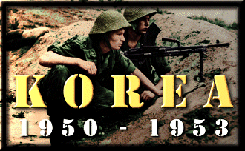The Battle of Hill 282: A Canadian view
As researched by Ed Hansen


A brief rundown on my service. I joined the NPAM as a 'boy soldier' in 1943 at the age of 141/2 and served until November 1945, unable to leave Canada due to my age. Post WW2 I joined the interim force of the permanent force with the PPCLI (Princess Patricia's Canadian Light Infantry) which became an airborne parachute unit in 1948. I served 21/2 years in Korea as a platoon sergeant. When the Canadian Airborne Regiment was formed in 1968 I was a senior jump master and joined them for two years both in Canada and in Germany with 3 Commando". I returned to Canada in 1972 as RSM of 3 Bn PPCLI following that posting I retired after 28 years service. Linda, my wife and I have three children, all grown up now, our oldest daughter is a teacher, the youngest daughter is a dental assistant and at present is in Australia, our son ia a naval officer at the local naval base and will be going back to sea duty in May of this year.
The Battle of Hill 282

During the Middlesex attack and ensuing occupation of Hill 325 (Middlesex Hill) the Argylls had advanced up the road and were preparing to attack Hill 282 preparatory to a further advance towards Songju. They were supported by five U.S. tanks and a battery of U.S. artillery. "A" Company (Major A.D.R.G. Wilson, MBE) captured an intermediate feature the afternoon of 22nd September, and "B" Company (Major A.I. Gordon-Ingram) and "C"23rd. "C" Company, on the left, was then ordered to secure Hill 388. At this stage the enemy reacted strongly. The battalion was shelled and mortared and enemy infantry in strength began to move from the left around the rear of all three companies. Due to the sternness of the hill, the lack of men to act as carriers, and enemy fire, the supply ammunition and the evacuation of wounded was difficult; but the Second-in-Command, Major K. Muir, was successful in taking forward a party with ammunitions and stretchers. As the situation became worse an air strike on Hill 388 was arranged. This was carried out soon after noon by three American planes; but, unfortunately, their napalm fire-bombs fell on "B" and "C" Companies on Hill 282, instead of on Hill 388, under the impression that the enemy had overrun Hill 282. This, together with earlier casualties, reduced the fighting strength of the two companies to about forty. Almost at once the enemy counter-attacked and this resulted in a temporary withdrawal from the crest. The situation was quickly restored, however, when Major Muir, who had taken command of both companies, collected some thirty men and led them back. Fierce close-quarter fighting followed, in which Major Muir showed the greatest courage and resourcefulness. He was eventually mortally wounded, and later posthumously awarded the Victoria Cross - a very gallant officer.
As there were barely twenty men left unwounded in the two companies, Major Gordon Ingram ("B" Company) realized that it was impossible to hold Hill 282, and at about 1400 hrs Lieutenant-Colonel Neilson reluctantly gave him permission to withdraw the remnants of the two companies. In this engagement the Argylls lost 2 officers and 11 other ranks killed and 4 officers and 69 other ranks wounded.
Ed Hansen May 1999



